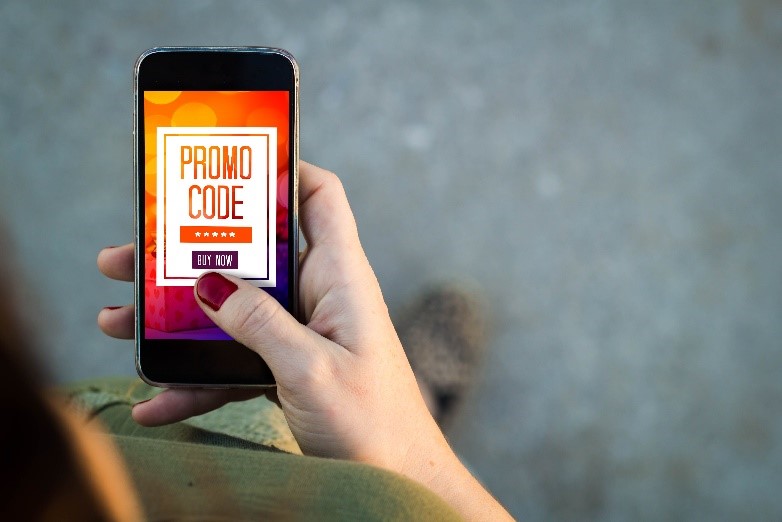When you hear the phrase “Just do it”, what comes to mind? What do you ask for when you order a soda in a restaurant? Or need a bandage for a cut? Most likely, you instantly respond to the questions with Nike, Coke, and Band-aid.
These are examples of brands having successfully grown their exposure and awareness among prospective customers. You may not realize it, but you interact with thousands of brands every day. However, you may only remember a few.
How to Grow Brand Exposure Online in 2020 Share on XWith the growth of digital marketing in 2020, brand exposure is more important than ever, especially for small businesses and startups. In today’s crowded marketplace, brands jockey to stand out from their competition. Brand awareness helps businesses reach a wider audience. This where brand exposure comes in.
What is Brand Exposure?
Brand exposure is the familiarity your prospective customers have with your business as well as your products and services. Brands can increase their popularity among their target audience by implementing specific strategies such as optimized content creation, participation in influencer marketing campaigns, distribution of branded promotional merchandise and more.
Brand exposure plays a large role in consumer buying decisions. The more a person recalls the brand name, the more they are likely to trust your business and make a purchase.
Prospective customers already familiar with your brand are more likely to buy quickly and with less sensitivity to price than prospects unaware of your brand. They also learn to trust your business. When customers trust your brand, they return to your business when they need your specific products or services.
The main goal of brand exposure is to increase your customer base and generate more sales. This article provides tips to effectively grow your brand exposure to your target audience.
Tips to Help Grow Brand Exposure Online in 2020
Increase Social Media Presence
To build brand exposure, you need to get visibility with your target audience. With approximately 223 million Americans using social media in 2019 and will more increase in 2020, it’s highly likely your prospective customers are on at least one of the major platforms (Facebook, Twitter, Instagram, Pinterest, Snapchat, LinkedIn). In addition to a large audience, posting on social media is free.
Instead of posting on every platform, find out which platforms your target audience uses the most and focus efforts on those channels. If you post on Twitter while your prospects spend most of their time on Instagram, you will waste valuable time and effort.
Typically, platform usage is broken down by age. Facebook is popular across all age groups while Instagram and Snapchat tend to attract a younger audience. Snapchat’s user base is mostly age 24 and under. Gender can also be an important demographic. For example, Pinterest’s users are mostly female. If you have a B2B product, LinkedIn is your best bet.
Facebook remains the largest social media platform in the world with over 2.41 billion active users as of June 2019. The users represent a wide range of demographics, enabling you to expose your brand to a variety of different audiences and businesses from different industries.
Recommended read: Top 10 WhatsApp Agencies Providing WhatsApp for Business API Solutions in India
Facebook offers low-cost advertising options, as well. You can develop targeted ads based on demographics, location or interests and analyze a wide range of helpful useful statistics (how many liking or unfollowing your page, how engaged they are with posts) to better target audiences and increase traffic.
Twitter, Instagram, and LinkedIn also offer advertising options to help build brand awareness, but the audiences aren’t as large and diverse as Facebook.
Collaborate with Influencers
Today’s consumers are more likely to trust a recommendation from someone they know than a brand. Consumers tend to ignore marketing and advertising or view with skepticism but do pay attention to user-generated content from people they know and trust such as influencers.
Influencers, as you can guess from their name, are influential people who specialize in your specific niche market, have built a strong online following and have the power to impact their followers’ purchasing decisions. Influencers should not be confused with celebrities. Influencers are well-known within their area of expertise.
To help create exposure for your brand, influencers promote businesses, products or services through their online channels including social media accounts, blogs, and online forums.
Heather Serdoz, Marketing Manager of an online CRE marketplace suggests, “Consider partnering with influencers in your niche market so your brand can build up trust with their followers. The goal is that your potential customers will engage with your brand because it is recommended by someone they trust and respect.”
Respond to Reporter Queries
Traditional media channels such as newspapers and magazines still hold trust with consumers. Getting your brand mentioned on popular and well-known media sources will help position you as a thought leader and expand your reach. Help a Reporter Out (HARO) and ProfNet are platforms reporters use to post queries related to articles they are writing. To ensure the reporter considers your response, read the query carefully and tailor your response to the publication’s readership.
Offer Prizes or Discounts to Readers Online
Incentives such as discounts, giveaways, and contests are a great way to expose your brand to a wider audience. They show your customers you are interested in earning their business.
Offer a prize or discount code in exchange for customers and prospective customers providing you with their email address and sharing your content on social media. Another idea is to ask customers to post a selfie on Instagram or Facebook with your product.
SEO Research
When you are looking for a product, you most likely conduct a web search on Google or another search engine. To grow your brand exposure, prospective customers need to find your business.
Search engine optimization (SEO) is a must in digital marketing. One of the best ways to get on your target audience’s message is to optimize your content for search engines. Implementing SEO strategies will improve your website’s ranking on search engine results pages.
Recommended read: How To Improve Your Business For Local Search And Audience?
Most consumers will not look past the first page of search engine results so the higher you can rank, the better. In order to improve SEO, you need to know who your audience is and what keywords they enter in search engines when looking for businesses like yours.
By conducting keyword research, you can determine which keywords and phrases your target audience is searching for and incorporate these into your content. Another SEO strategy is to check out your competitors and see what keywords they use. There are many tools available to help you with keyword and competitive research.
For example, if your target audience is landlords renting out their homes, provide content on your site that they will find relevant and useful, and then speak to them directly in language they are familiar with. A great example of this can be seen below in the blog of SmartMove. They categorize their topics based on the specific audience, in this case the landlord, and provide articles pertinent to the selection:
Distribute Branded Merchandise
Does your business attend industry tradeshows, conferences or other networking events? If so, bring branded merchandise to give away to attendees to build brand awareness. Everyone loves getting free stuff and you leave them with something to remember your brand.
The items don’t have to be anything fancy. Pens and notebooks are always appreciated especially at conferences and tradeshows or you can pick an item related to your industry or brand.
Guest Blogging
Writing relevant, fresh content for external websites and blogs in your niche market puts your brand in front of an audience you may not reach otherwise.
Guest blogging also helps position you and your business as a thought leader in your niche and recognized within the industry as an expert.
Each blog has its own guidelines for guest posts so make sure to read before submitting. Most blogs will not allow you to submit content published elsewhere so you need to create unique content for each guest post.
While blogs typically allow you to link to your own blog or website in the author bio, some will allow you to include non-branded links in your post (links outside of the blog/website).
Summary
If your target audience doesn’t know who you are, they can’t purchase your product. To grow your brand exposure, use the tips mentioned in this article to gain visibility and recognition from a wider audience. Once prospects are familiar with your brand, you will see an increase in leads and sales.
General FAQs
Brand exposure is the familiarity your prospective customers have with your business as well as your products and services.
Brand awareness is a marketing term that describes the degree of consumer recognition of a product by its name. Creating brand awareness is a key step in promoting a new product or reviving an older brand.
Brand promotion is the way to inform, remind, persuade convincingly, and influence the consumers to drive their decision towards purchasing the product or service under a brand.









